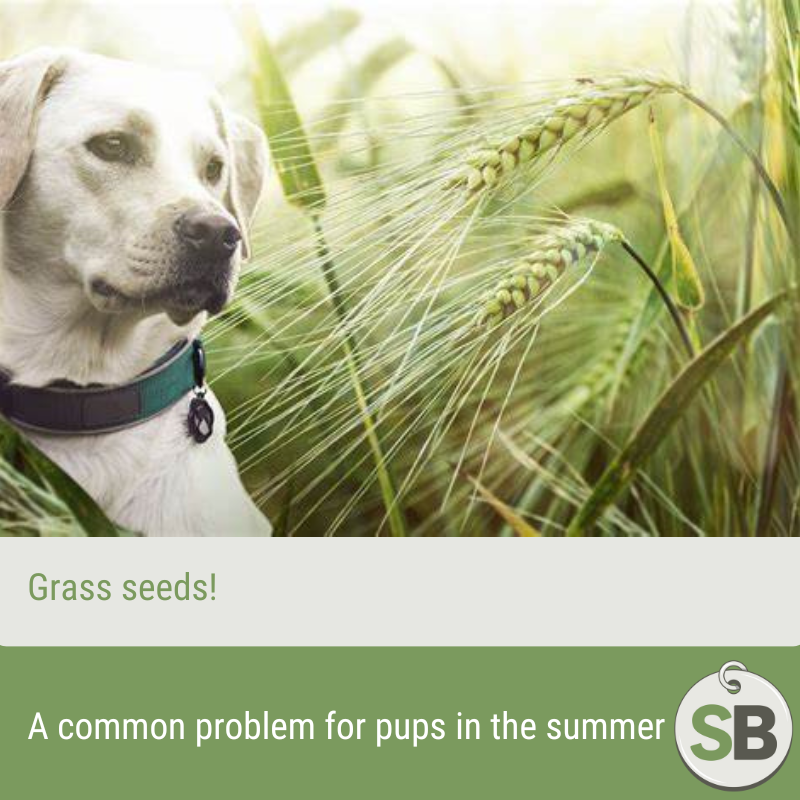Grass Seeds in the Summer

Grass seeds are attached to the tops of long grass stems and can easily brush off onto your dog during walks. Although tiny, they have the potential to cause real pain to your dog. The seeds have pointy ends and are very sharp so they easily become trapped in a dog’s fur and can burrow down the coat to pierce the skin. They are normally found stuck in the dog's toes and ears. Unfortunately, in rare cases, the grass seed can go under the skin and travel to other areas of the body. They have even been known to end up in the chest area. Once they start travelling around the body they can be very difficult to find
Signs of the seed
The signs to watch out for are the sudden onset of head shaking and paw licking, especially shortly after a walk. If your dog is pawing at their head and an ear, they might have grass seed lodged in their ear canal. Sometimes dogs will also hold their heads to the side in an attempt to shake it out.
If your dog has grass seeds lodged in the skin between the toes, you may see a red raised ‘boil’ that the dog has been licking for a day or two. There's often a small hole and sometimes the tip of the grass seed may be visible. The dog's paw may be swollen or sore if the grass seed has moved into the foot.
Grass seed treatment
If you see any signs of lurking grass seeds on your dog, you should consult your vet for advice as soon as possible. After removal of the seed, often under anaesthetic, the dog is usually treated with painkillers and antibiotics to counter any infection.
Prevention
All breeds with hairy ears and feet are at particular risk from grass seed, but you could take preventative action by avoiding long-grassed areas and keeping the fur around your dog’s ears and feet trimmed short during summertime.
It’s also a good idea to check your dog all over for any lurking grass seeds after every walk, as they can become stuck in a number of places, including eyelids and lip folds, as well as the paws and ears.
Interested in reading more? Why not explore the Can dogs see in the dark blog here

